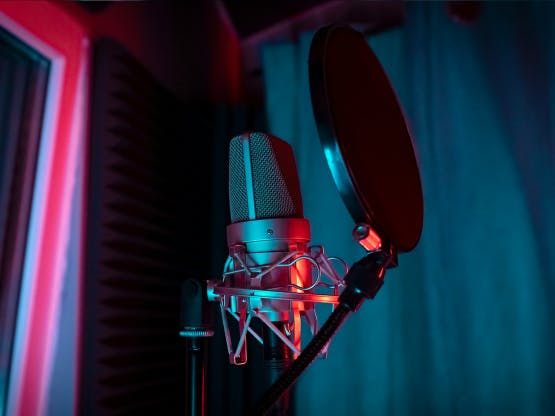There are many ways to describe microphones, but perhaps the most defining characteristic of any mic is its directionality, or polar pattern. The pattern describes how the microphone responds to sounds arriving from different directions.
Understanding polar patterns helps engineers and musicians control bleed between instruments, capture or reject room ambience, and even shape a microphone’s tonal character. Taking advantage of polar patterns is one of the most effective ways to shape the frequency response and spatial depth of a recording.
There are three essential polar patterns: cardioid, omnidirectional, and bidirectional (figure-8).
- Cardioid microphones have a heart-shaped pickup pattern. They’re most sensitive to sound arriving from the front (on-axis) and less sensitive as the source moves to the side or rear (off-axis).
- Omni-directional microphones capture sound evenly from all directions..
- Figure-eight microphones behave like back-to-back cardioid microphones. They pick up sound from directly in front and behind the mic, while effectively rejecting sounds from the sides.

Let’s take a closer look at the pros and cons of each microphone type, followed by some audio examples and a handy cheat sheet for application tips at the end of this article.
Cardioid Microphones
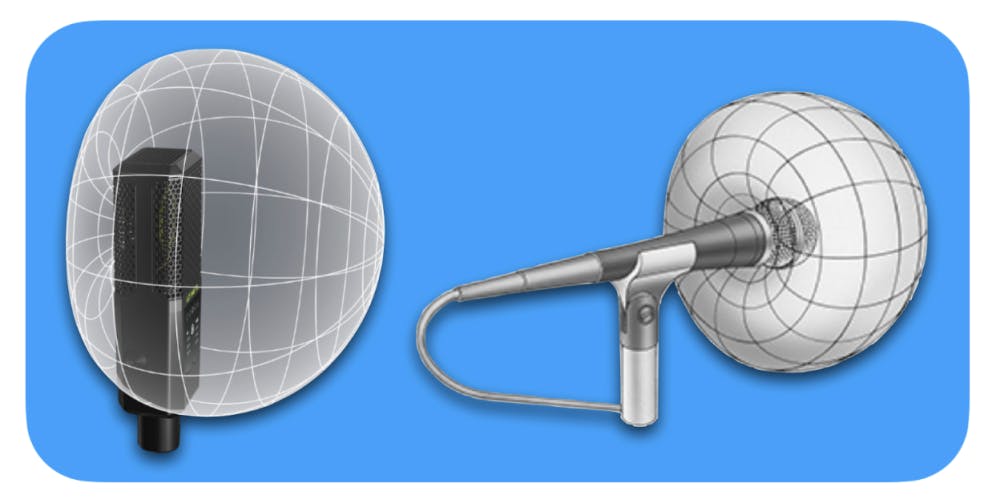
Cardioid microphones are by far the most common type used both on stage and in the studio due to their ability to isolate the featured sound and their tonal qualities.
Technical Aspects
- Cardioid polar patterns can be achieved with dynamic, condenser, and even some ribbon microphones (e.g., AEA KU4, KU5A, Beyerdynamic M160).
- A cardioid pattern is a heart-shaped, unidirectional microphone pickup pattern that is most sensitive to sound coming from directly in front of the microphone. Sound entering from the sides and rear is largely rejected.
- It is the most common and widely used polar pattern in both live sound and studio recording because of its ability to isolate a sound source.
- Cardioid microphones are primarily pressure-gradient transducers. They work by measuring the difference in sound pressure between the front and rear of the diaphragm (often through acoustic vents in the mic body) to create their directional pattern.
Creative Aspects
- Because cardioid microphones primarily pick up sound arriving from the front, they minimize ambient noise and room reflections, making them ideal for recording in less-than-perfect environments.
- This same directionality also reduces feedback in live applications.
- Directional microphones naturally capture an exaggerated low-frequency response for nearby sound sources. This phenomenon, called the proximity effect, can make vocals or instruments sound warm and full. Skilled singers and voice-over artists adjust their distance to the mic to control the amount of low-end boost.
Drawbacks of Cardioid Mics
- Sounds arriving from the sides or rear are not only quieter; they may sound unnatural or tonally colored. This off-axis coloration can be difficult to correct in a mix.
- Directional microphones are susceptible to air movement, so cardioids can exaggerate plosive “p” and “b” sounds and wind gusts. Pop filters and foam covers can mitigate these problems.
- Due to their narrow pickup angle, sound sources must remain directly in front of the microphone. Singers or musicians who move around while performing may sound inconsistent.
Audio Examples for a Cardioid Microphone
Here is how the cardioid polar pattern picks up sound around the mic:
Here is how a cardioid mic reacts to proximity:
Variations of Cardioid Patterns
Other related directional patterns are derived from the cardioid design, each offering a different balance of isolation and ambience:
- Supercardioid: Has a narrower front pickup angle along with greater side rejection than a standard cardioid, but picks up a small amount of sound directly from the rear (a “rear lobe”).
- Hypercardioid: Offers maximum directionality with an even tighter front pickup pattern, but with a slight rear lobe.
- Subcardioid (wide cardioid): Offers a wider pickup area, falling between omnidirectional and cardioid patterns. This pattern can capture more ambience and a smoother off-axis tone in well-treated rooms.
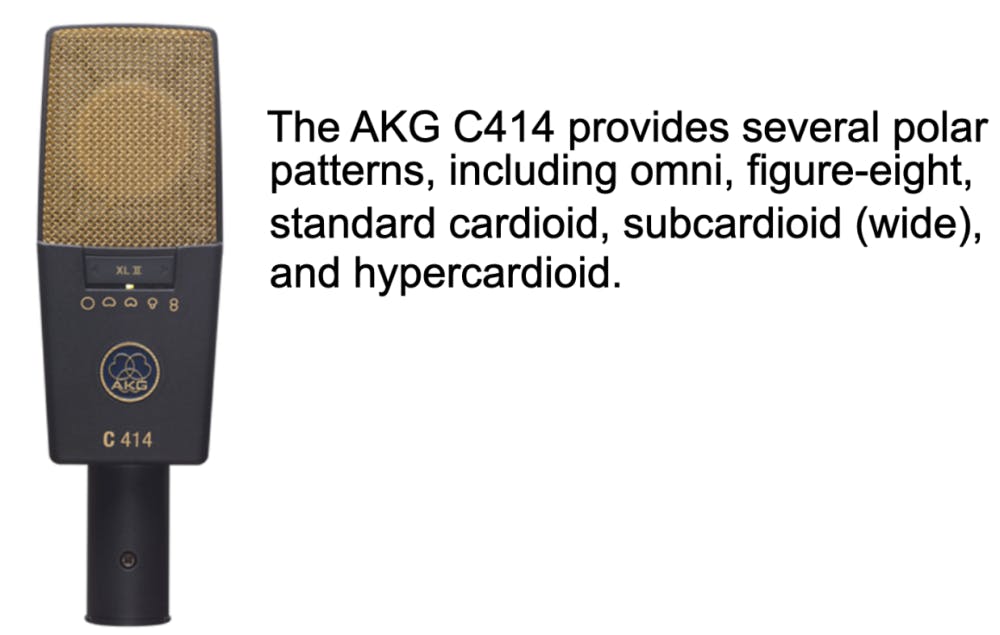
Omnidirectional Microphones

Omnidirectional microphones are equally sensitive to sound coming from all directions, forming a spherical pickup pattern around the capsule. They generally produce a flat frequency response and a natural, open sound that includes the ambience of the recording environment.
Technical Aspects
- Omni patterns are typically achieved with condenser microphones, although some dynamic microphones (e.g., EV 635A, RE50, Shure SM63) capture an omni pattern.
- An omni capsule responds purely to sound pressure, making it a pressure transducer rather than a pressure-gradient design.
- Being pressure transducers, omni mics are more resistant to plosive “p-pops” and mechanical or wind noise compared to directional mics.
- They exhibit no proximity effect, since there’s no front-to-back pressure differential, capturing a more “true-to-life” sound.
Creative Aspects
- Omnidirectional microphones are known for their natural, transparent tone and smooth off-axis response, particularly in the low frequencies.
- Their smooth off-axis response provides a natural representation of space and room acoustics, including natural-sounding leakage, which can be easier to deal with while mixing.
- A major advantage is the absence of the proximity effect. The microphone can be placed very close to a sound source without an unnatural bass boost. This results in a consistent tonal balance regardless of distance.
- Excellent for miking orchestras, choirs, and big bands, where bleed is inevitable and natural ambience and spatial depth are desirable.
- Often used for interviews, especially outdoors, where wind sounds are mitigated by the microphone’s design.
Drawbacks of Omnidirectional Mics
- Due to their flat and natural frequency response, omni microphones may not provide the “character” or coloration desired for some vocal, dialog, or instrumental recording.
- Omni mics do not isolate a single sound source. This can be a significant problem in untreated rooms or where acoustic isolation of instruments is not possible, but desired.
- Rarely useful in live sound reinforcement due to their high susceptibility to feedback and leakage.
Audio Examples for an Omnidirectional Microphone
Here is how the omnidirectional pattern picks up sound around the mic:
Here is how an omnidirectional mic reacts to proximity:
Variations of Omni Patterns
Omnidirectional microphone elements can be utilized to great advantage in special applications.
- Boundary or pressure-zone (PZM) microphones: An omni capsule placed near a boundary (table, wall, floor, or solid plate) captures a half-space or hemispherical pattern. These are useful for capturing a natural sound when placed inside pianos, on conference room tables, or mounted on the walls in drum booths.
- Lavalier Microphones. These miniature microphones are often seen clipped to the lapel or collar of a news reporter or interview subject. Their even off-axis response ensures a consistent tone even as the speaker changes position.
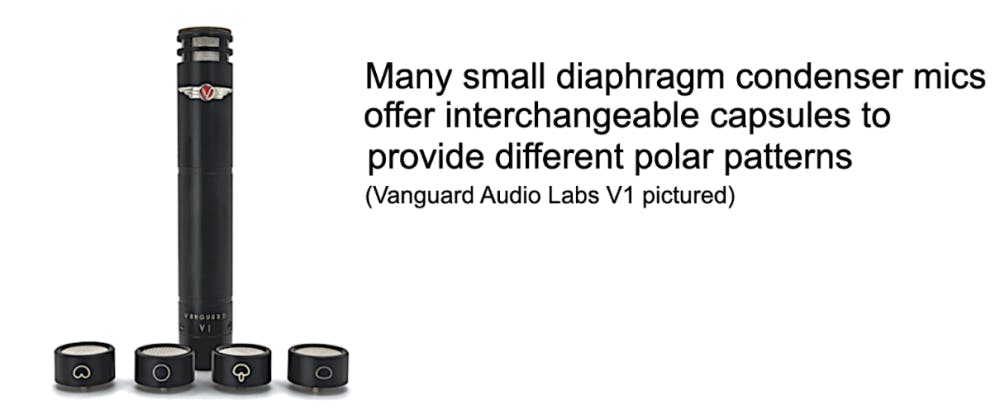
Figure-Eight Microphones
A figure-eight polar pattern (also known as bi-directional) describes a microphone that is equally sensitive to sound from both the front and the rear of the microphone. This pattern rejects sound from the sides (90˚ and 270˚). When plotted on a graph, the pickup pattern resembles the number “8” or an infinity symbol.
Technical Aspects
- Figure-eight patterns are achieved with most ribbons and many condenser microphones.
- Figure-8 mics have inherently symmetrical pickup — the front and rear lobes are equal in sensitivity and frequency response — making them one of the most predictable and versatile directional types in controlled acoustic spaces.
- Sounds from the rear of the microphone are captured 180 degrees out of phase with sounds from the front, allowing for specialized stereo miking techniques, such as Mid-Side (M-S), Blumlein, and Faulkner arrays.
- Bi-directional microphones are known as velocity or pressure gradient microphones because they respond to the difference in pressure between the front and back of the diaphragm.
Creative Aspects
- The microphone captures sound from two opposite directions with equal sensitivity, making it ideal for capturing two performers facing each other.
- Directional microphones naturally provide proximity effect, and the figure-eight is no exception, providing a warm sound for close sources.
- A standout feature is the near-total rejection of sound coming from the sides (“nulls”). This can be strategically used to eliminate unwanted instruments, room reflections, or background noise. For instance, when miking a singer who is also playing acoustic guitar, a figure-eight vocal mic can be placed to reject the sound from the acoustic guitar.
- Often used for classical recording with two figure-eight microphones placed in a Blumlein array for realistic and focused stereo imaging with a natural sense of space.
Drawbacks of Figure-eight Mics
- Because it is equally sensitive to the front and rear, any unwanted sounds behind the microphone are captured with the same clarity as the intended sound in front.
- As with other directional mics, directional microphones are susceptible to plosives, like “p” and “b” sounds. Outdoors, these mics can exaggerate wind noise. Pop filters and foam covers can mitigate these problems.
Audio Examples for a Figure-eight Microphone
Here is how the omnidirectional pattern picks up sound around the mic:
Here is how an omnidirectional mic reacts to proximity:
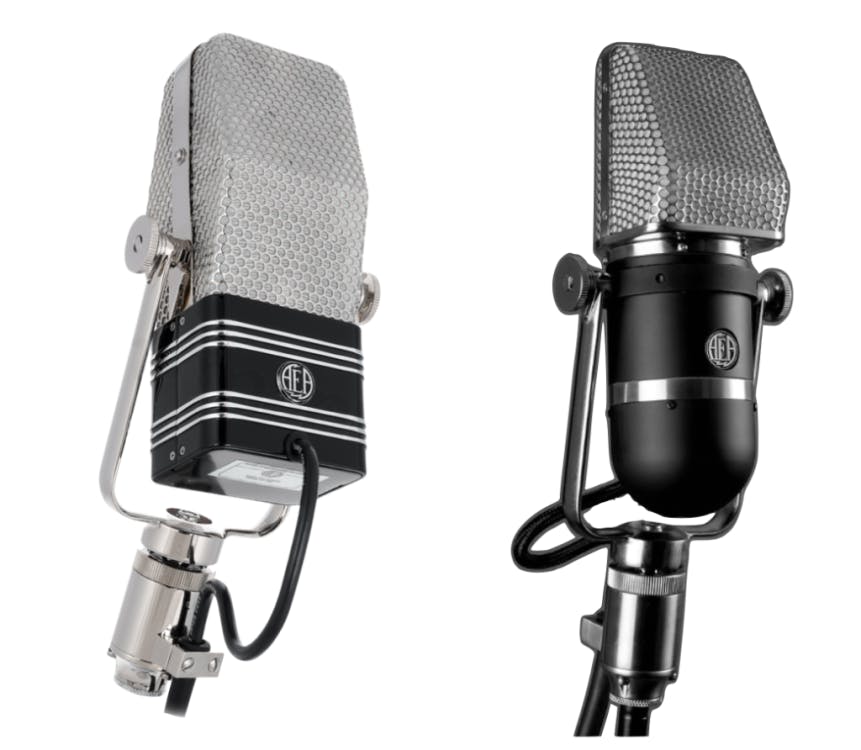
Practical Applications of Polar Patterns
While it’s clear that directional and omnidirectional microphones each offer distinct advantages for capturing or reducing ambience and bleed, it is also true that the tonal differences between these patterns can creatively shape a recording. Microphones with selectable polar patterns are particularly useful in this regard. Switching a mic between omni, cardioid, and figure-8 not only conveniently determines how much room sound is captured, but it can also fine-tune the frequency balance and proximity effect of the mic.
Some microphones provide discrete pattern settings, while others allow you to dial in intermediate positions, blending the characteristics of two patterns. This flexibility allows us to adjust both spatial response and tonal character to fit any source or acoustic environment. For example, if a singer sounds too bass-heavy, you can simply adjust the pattern away from cardioid and toward omni for a flatter low-frequency response with reduced proximity effect.

Tips for microphone applications:
Studio Pop Vocals
Start with a cardioid microphone for most situations — it delivers a present, warm tone with good isolation. The omni pattern captures slightly more room ambience and can sound thinner but more natural, which is useful when you want openness or less proximity buildup. The figure-8 pattern provides an alternative sense of ambience, compared to cardioid, while exhibiting a similar proximity effect. If your mic offers switchable or continuously variable patterns, experiment with settings near the omni end to reduce proximity effect or toward more directional settings for tighter low-end focus.
Pro Tip:
If a directional mic picks up too much room tone during a vocal take, remember that reflections often enter from the same direction as the singer. Position the singer so that the area behind them is non-reflective. Hang a blanket or place acoustic panels behind the performer rather than behind the mic. Devices like microphone shields that surround the rear of a microphone may not reduce room sounds and may actually create unwanted reflections that adversely affect the tone of the mic.
Two Singers on One Mic (Studio)
Have the singers face each other with the mic set to figure-8 between them.
Balance levels by adjusting each singer’s distance from the mic.
Omni can also work well, offering a more natural blend but with more ambience and less proximity effect. Two singers on a single cardioid mic may sound uneven, since both will be slightly off-axis.
Two Singers on Two Mics (Shared Booth)
When singers share a small space, bleed between mics can cause comb filtering that complicates mixing. Use directional mics for better isolation. Figure-8 capsules are particularly effective because they reject sound from the sides. Experiment with positioning: singers side-by-side, facing each other, or separated by a baffle between the singers and/or microphones.
Solo Instruments (Studio)
Treat solo instruments similarly to vocals, but remember that omnidirectional mics often sound more natural at close distances. For acoustic guitar, cello, and upright bass, omnis can reduce boominess caused by the proximity effect and capture a smoother off-axis tone.
On Stage
Live performances almost always call for directional microphones to help reduce feedback and stage bleed. Omnis can still shine as drum overheads and section mics for ensemble reinforcement, where a natural blend and large coverage area are desired.
Ensemble Recording
For classical and ensemble recordings, techniques like the Decca Tree, Blumlein pair, or Faulkner array are used, and each of these relies on specific polar patterns and precise spacing. Excellent results can also be achieved with more common spaced-pair or coincident techniques, in which case all directional patterns can be auditioned to determine which provides the desired result.
Close-miking in ensembles will result in bleed, and omni patterns will provide “good-sounding” bleed. Directional patterns may provide more isolation, but their off-axis coloration can make mixing difficult.
Podcasting
Cardioid mics are most common, as they reduce room tone and bleed while providing a pleasant proximity-enhanced “radio voice.” Each participant should ideally have their own mic.
If multiple guests must share one mic, switching to omni can yield a more balanced and natural capture, though with slightly more room tone.
Voiceover and Narration
Cardioid microphones are typically preferred for their intimate, forward presentation and the bass lift from the proximity effect. Omnis can work beautifully for narration in well-treated rooms when you want a more neutral, transparent tone.
Continue reading our blog to learn more about how to choose your first mic or everything to know about decibels.
